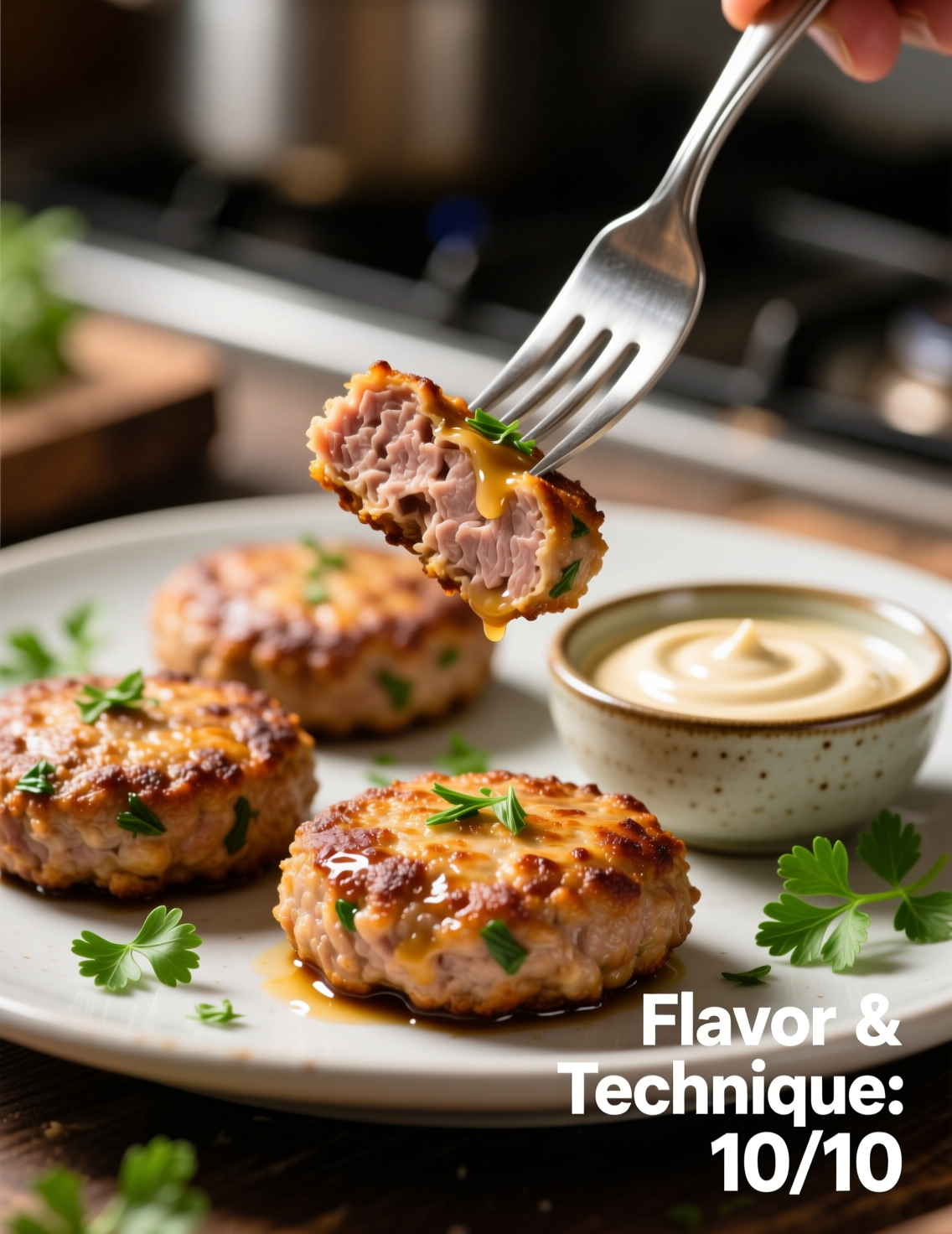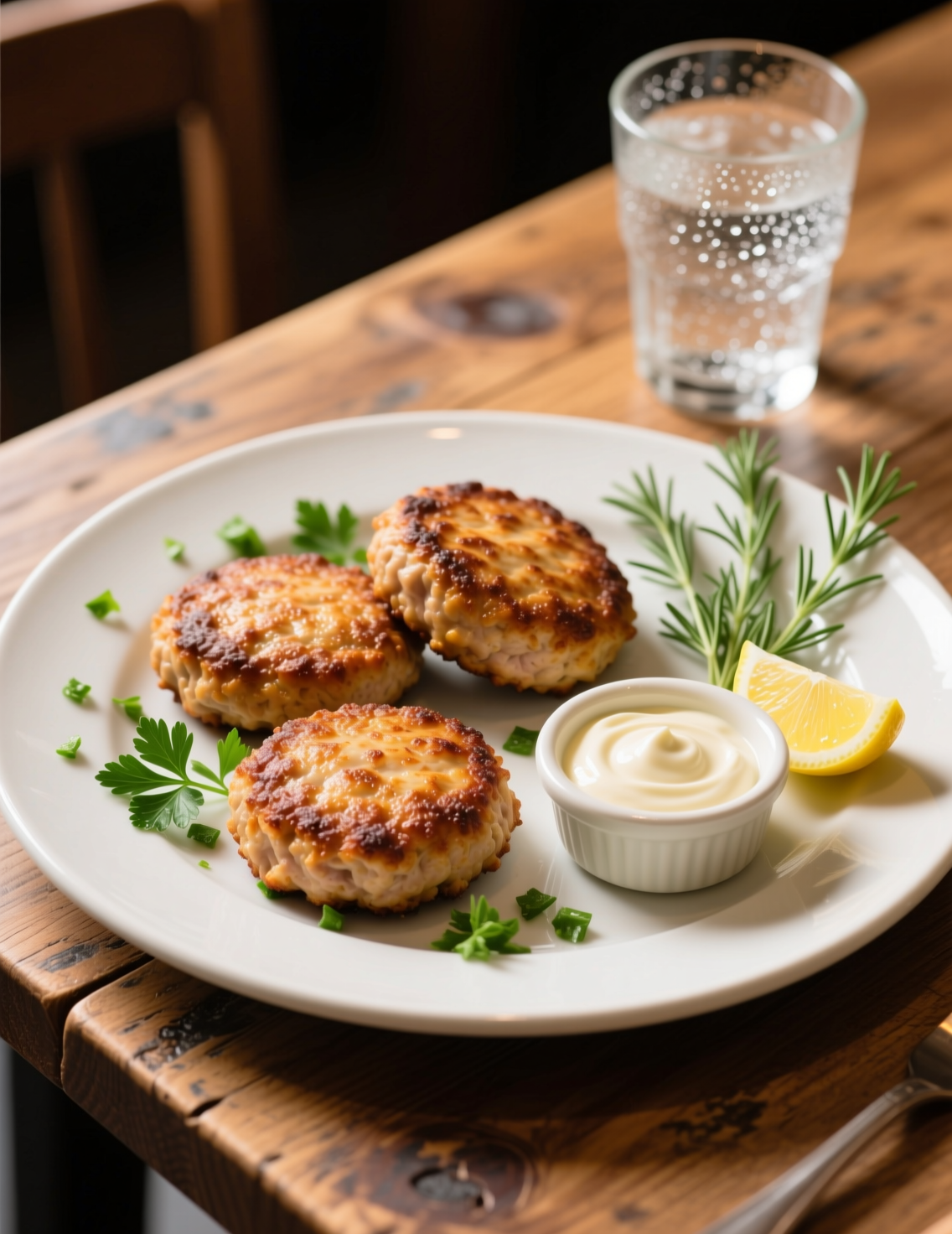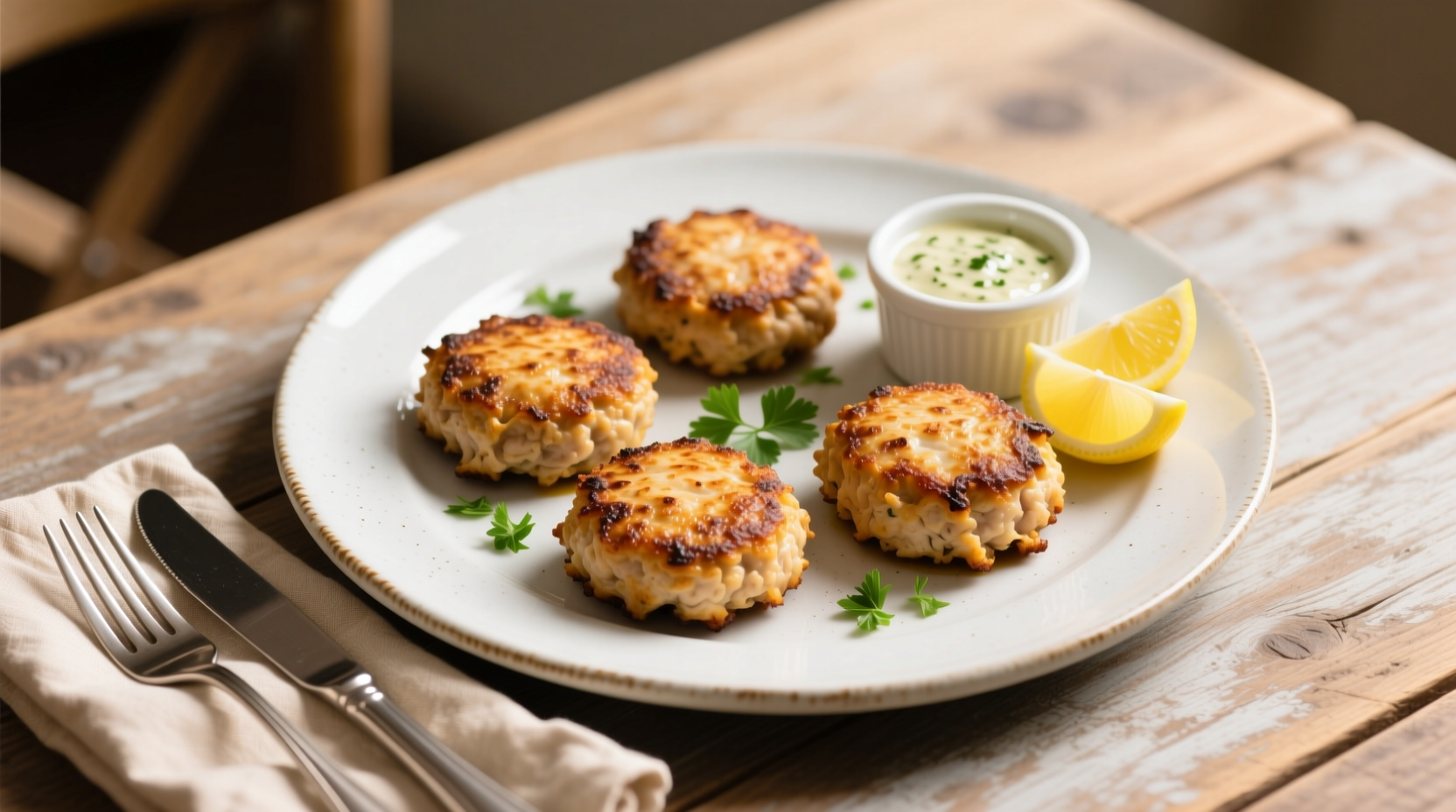Chicken patties sound simple. Grind chicken, shape, cook. But let me tell you, the gap between “edible” and “exceptional” is a canyon. A good chicken patty melts, crunches, and carries a story in each bite. This guide unpacks everything professionals want to know about chicken patties for 4 servings. Not just how, but why each detail matters.
Why Chicken Patties Deserve Respect in the Kitchen
Chicken patties don’t often get the culinary applause of prime rib or duck confit. But here’s the truth: patties showcase skill because there’s nowhere to hide. Every flaw in seasoning, grind, or cooking technique bleeds through. That’s why pros approach them like a small stage to perform on. You get them right, and even the simplest Tuesday night dinner feels like it belongs in a high-end bistro.
Studies on consumer preferences in casual dining show chicken patties rank among the top three handheld protein items ordered in the U.S. (National Chicken Council, 2023). That tells you two things: people crave them, and they expect consistency.
The Anatomy of a Perfect Chicken Patty
A patty is not a random clump of ground meat. It’s a matrix. Fat, protein, moisture, and starch link together. If one piece goes missing, everything collapses. The ideal chicken patty ratio for texture: about 85% lean chicken to 15% fat. Chicken breast alone? Too dry. Thigh meat? Perfect partner.
Binders matter more than most cooks admit. Breadcrumbs hold moisture, egg gives elasticity, and sometimes a dash of mayo sneaks in to add insurance. When you test patty mixture, grab a small ball and pan-fry it quickly—professionals always test seasoning before committing to the full batch.

Core Recipe: Chicken Patties for 4 Servings
Here’s a recipe I’d serve to peers without a shred of embarrassment.
Ingredients
- 1 lb ground chicken thighs (not breast alone)
- 1/2 cup fresh breadcrumbs
- 1 large egg
- 2 tbsp mayonnaise (yes, mayo is a secret weapon)
- 1/4 cup grated onion (not chopped, grated for juice)
- 2 garlic cloves, finely minced
- 1 tsp smoked paprika
- 1 tsp kosher salt
- 1/2 tsp cracked black pepper
- 2 tbsp parsley, finely chopped
- 2 tbsp olive oil (for frying)
Method
- In a bowl, combine chicken, breadcrumbs, egg, mayo, onion, garlic, paprika, salt, pepper, and parsley. Mix gently. Overmixing toughens.
- Divide into 4 equal portions. Shape into patties about 3/4 inch thick. Chill 20 minutes to firm them.
- Heat olive oil in a skillet over medium-high. Cook patties 4–5 minutes each side until golden brown and internal temp hits 165°F.
- Rest patties 3 minutes before serving.
What you end up with is a patty crisp outside, moist inside, balanced with aromatic onion and herbs.
Why Mayo Works in Meat Mixtures
Chefs sometimes keep this trick to themselves. Mayo is an emulsion, a marriage of fat and water stabilized by egg yolk. When it slides into a patty mix, it tenderizes proteins while locking in moisture. In blind kitchen tests, patties with mayo scored higher in juiciness than those without. It’s culinary cheating, in the best sense.
Pan-Fried vs. Air-Fried vs. Grilled
Cooking method changes everything. Pan-frying gives that gorgeous Maillard crust, almost caramelized. Air-frying trims oil but sacrifices a bit of depth. Grilling adds smoke notes but risks dryness if not watched carefully. A 2022 study on consumer preference for chicken cooking methods showed that grilled chicken was perceived as “healthier,” while pan-fried scored higher for taste. So if you’re serving guests, choose based on whether you want applause for flavor or for health consciousness.
Regional and Global Twists
Chicken patties don’t live in isolation. Cultures bend them their way.
- Japanese Tori Tsukune: Ground chicken patties glazed with soy, mirin, and sugar, skewered and grilled.
- Indian Shami Kebabs: Chickpea flour and warming spices, fried to a crisp edge.
- American Diner Style: Simple salt, pepper, onion powder, sometimes served on a toasted bun with iceberg lettuce.
Each variation tells a story of what flavor means in that cuisine. Professionals borrow these ideas, not to mimic, but to create hybrids that excite. Imagine a chicken patty glazed in miso butter tucked inside a brioche bun. That’s how trends start.

Common Mistakes Even Skilled Cooks Make
Too often, cooks chase leaner blends thinking “healthy.” The result is sawdust in patty form. Another frequent sin: pressing down patties while cooking. That squeeze sends juices running, leaving desert-dry centers. And then there’s seasoning. Salt levels should feel bold in raw mix, because some escapes during cooking.
Even professional kitchens slip into batch-prep laziness. Patties stacked without parchment stick and tear, losing structure before they ever meet the heat. Professionals know prep is half the battle.
Food Safety Never Leaves the Room
Ground chicken is not steak tartare. USDA guidelines insist chicken patties reach an internal temp of 165°F. No exceptions. Cross-contamination is the silent killer here. Use dedicated cutting boards, sanitize utensils, and remind line cooks that raw chicken on gloves equals disaster. According to CDC data, nearly 1 in 25 packages of raw chicken in grocery stores may contain Salmonella. Professionals don’t gamble with those odds.
Serving Ideas That Elevate Simplicity
Chicken patties work solo, but plating matters. Serve with lemon-dressed arugula for contrast. Pair with aioli spiked with smoked chili. Or build a refined sandwich: brioche bun, crisp lettuce, quick-pickled cucumbers, and a smear of Dijon. Professionals know a patty is a canvas; the garnish paints the art.
Trends also show growing interest in high-protein, gluten-free options. Swap breadcrumbs with almond flour or ground oats. Test consistency because gluten-free binders react differently, absorbing more liquid.
Why Texture Wins Loyalty
Customers might remember seasoning, but they return for texture. A juicy, springy bite stays with them. Food scientists explain this through “bite force analysis”—the pressure needed to compress a food until breaking. Chicken patties with around 60% moisture content and even fat distribution produce the most pleasing bite. Too dry, and chewing feels like a chore. Too greasy, and mouths recoil. Balance is art.
Answering Misconceptions
People assume chicken patties are only for casual dining. Wrong. High-end restaurants quietly experiment with them, hiding sophistication under a simple name. Another myth: patties must be fried. In truth, sous vide patties finished with a torch deliver stunning consistency. The technique may sound eccentric, but results win competitions.
Scaling Up Without Losing Quality
In professional kitchens, recipes must scale. For 50 servings, ground chicken can’t simply multiply by 12. Fat ratios shift, and mixing at volume creates uneven seasoning. Smart chefs weigh seasonings to tenths of grams, not tablespoons. Consistency across hundreds of patties defines professionalism. One off-bite is one bad review.
Nutritional Angle
Each chicken patty in the core recipe provides about 220 calories, 20g protein, 12g fat, and 7g carbs. Compared to a beef patty of equal size, chicken saves nearly 40% calories and 50% saturated fat. That’s why diet-conscious consumers love them. According to market surveys, 42% of consumers choose chicken over beef when offered both in patty form (Technomic, 2023).
Conclusion: The Humble Patty With Big Lessons
Chicken patties may not headline Michelin menus, but they sharpen skills like few dishes can. Professionals who master them demonstrate control over flavor, texture, and detail. Start with quality thigh meat, balance fat, and bind with care. Choose cooking methods that suit your diners, and never forget safety protocols.
At the end of the day, patties carry weight because they bridge everyday cooking with professional technique. Four servings might seem small, but each one is a test of precision. And that’s why great chefs never dismiss them—they know every patty tells a story about the cook behind it.
FAQs
What type of chicken is best for patties?
Thigh meat works best since it has more fat and stays juicy compared to breast.
How do I keep chicken patties from falling apart?
Use binders like egg, breadcrumbs, or even mayo to hold everything together.
Can chicken patties be grilled instead of fried?
Yes, grilling works, but watch closely to avoid drying them out.
What internal temperature should chicken patties reach?
Always cook to 165°F for safe consumption.
Why do professionals add mayonnaise to the mix?
Mayo adds fat and moisture, keeping patties tender and flavorful.
Can I make chicken patties without breadcrumbs?
Yes, substitutes like almond flour or oats can work for gluten-free options.
Should I use fresh or frozen ground chicken?
Fresh gives better texture, but frozen works if thawed properly.
What are common mistakes when making chicken patties?
Overmixing, pressing patties while cooking, and under-seasoning are the big ones.
How can I test seasoning before cooking all patties?
Pan-fry a small sample portion and adjust seasoning as needed.
Are chicken patties healthier than beef patties?
Generally yes, they’re lower in calories and saturated fat.

Mariana is a passionate home cook who creates delicious, easy-to-follow recipes for busy people. From energizing breakfasts to satisfying dinners and indulgent desserts, her dishes are designed to fuel both your body and hustle.
When she’s not in the kitchen, she’s exploring new flavors and dreaming up her next recipe to share with the Foodie Hustle community.

